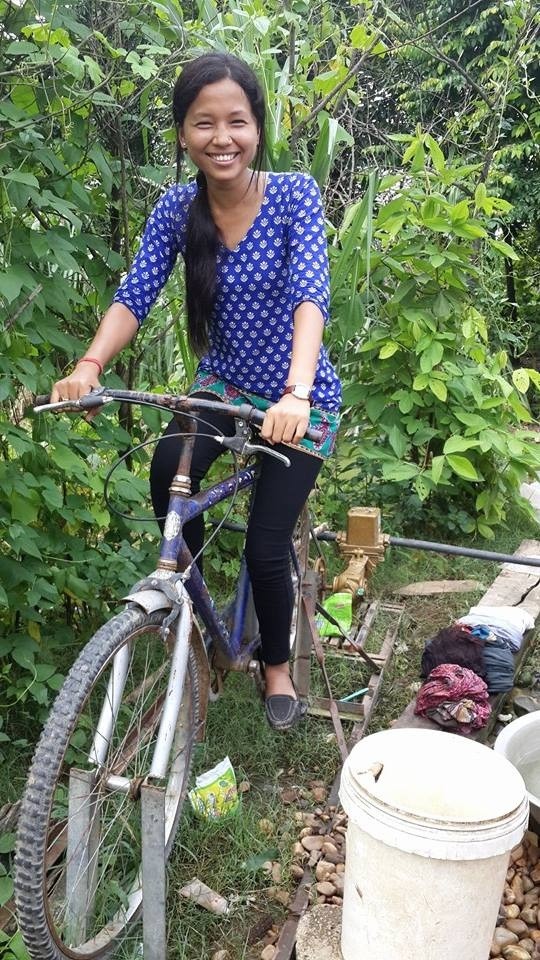
Jan. 2015—Watering crops can be as easy as riding a bike in Nepal, where farmers are putting low-tech development into motion on two wheels in an effective approach that is being rolled out in other countries in South and Southeast Asia. They are not just spinning their wheels, they are driving farm development forward.
With training from USAID’s Agricultural Learning Exchange through Asian Regional Networking project, new methods of farming help bring in additional income as farmers sell their produce at higher prices during the dry season when the crop supply is low.
Lifelong farmer Kumbha Singh Chaudhary bought a low-tech pump to attach to his bicycle, which allows him to pump water simply by pedaling. As he rides the bike, the water pressure builds and pushes the water up to five meters high into a rain barrel. From there, it can be used to irrigate his vegetable field.
“I was inspired by the simple method of technology used in the bicycle pump,” said Chaudhary. “An old, unused bicycle can be found in every house in Banke, Nepal.”
For farmers who water their crops by the bucket, even simple irrigation pumps like this can double their productivity.
The USAID project brought nine farmers from Bangladesh, Cambodia and Nepal to Thailand for an internship program in May 2014. The four-week course allowed the farmers to observe and acquire practical skills on proven innovative and sustainable agricultural technologies used in the country, such as a pump to attach to a bicycle. Chaudhary bought the pump for 2,400 Thai baht ($80) and brought it home with him.
“I’m using [this method] myself first, and then I will let others learn from me,” said Chaudhary.
According to the World Bank, only 16 percent of land in Nepal is arable, so farmers need to make the most of their land. Chaudhary hopes that more farmers will adopt this method of irrigation because the pump is affordable and can be easily obtained in Thailand. The method is getting so popular that in Cambodia, where only 23 percent of land is irrigated, 12 AgLEARN farmers plan to use the bicycle method in the upcoming planting season and will test its efficiency in increasing productivity of their cabbage crops.
USAID works to improve the livelihoods and food security of rural farmers by introducing innovative farming practices and technologies from Thailand and India to targeted communities in Bangladesh, Cambodia and Nepal. This irrigation technique is just one example of how new technology is being brought into rural farming, which is helping hundreds of farmers increase their incomes and lead better lives.
LINKS
Follow @USAIDAsia, on Facebook, on Flickr, on YouTube







Comment
Make a general inquiry or suggest an improvement.